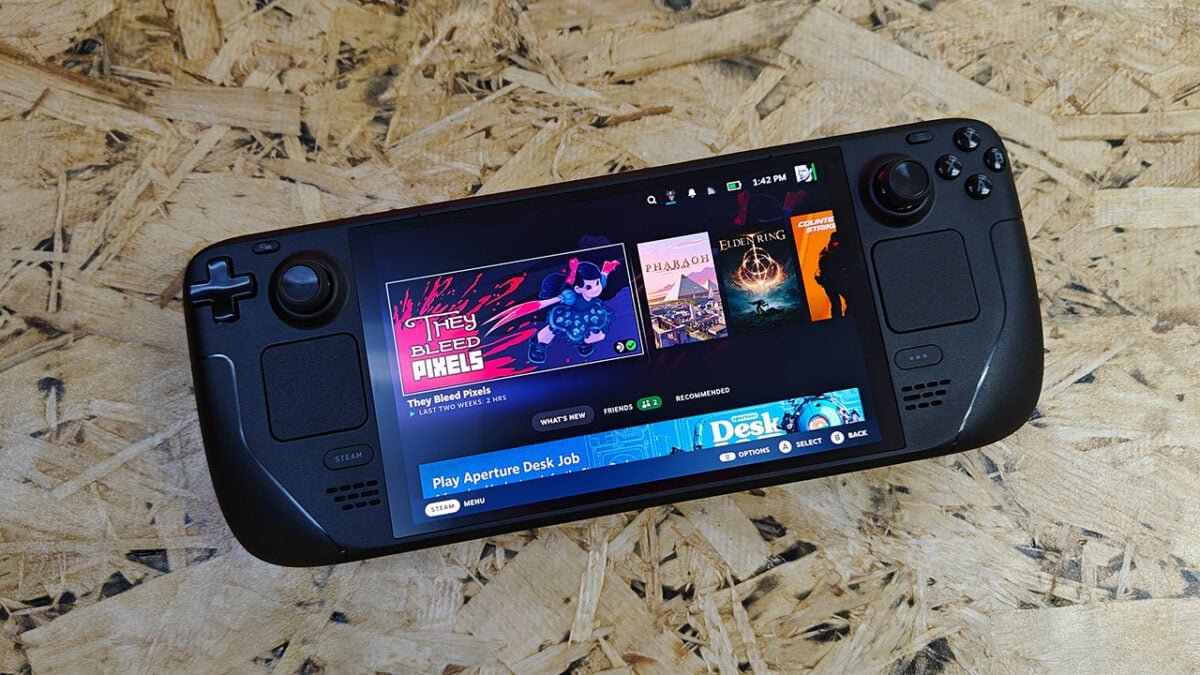In the realm of handheld gaming, Valve’s Steam Deck OLED emerges as a formidable contender, directly challenging industry giants with its advanced PC-based platform. Priced at a premium, it promises an unparalleled gaming experience with its new OLED display and enhanced performance features. CGMagazine looked at the last iteration of the Steam Deck and was impressed by what it brought to the table. It was a solid system that brought new life to your existing Steam library. So, with that in mind, let’s look at how Valve’s Steam Deck OLED fares, how it differs from its past iteration, and how it stacks up in the increasingly crowded handheld gaming market.
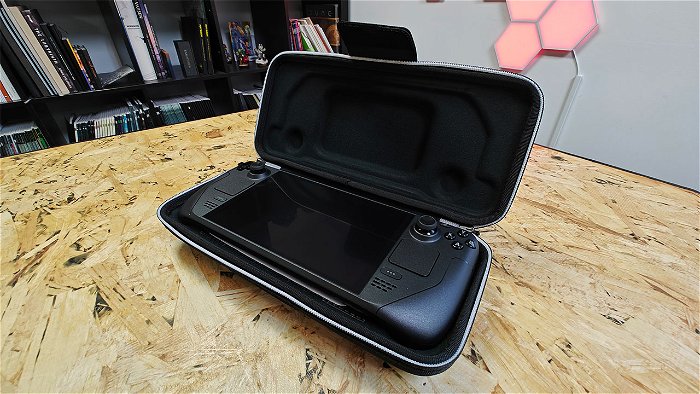
Opening up the box, you will be greeted by a system that takes the lessons of past Valve devices into account and looks absolutely stunning, along with accessories and a handy carrying case. The console feels tailor-made for gamers, offering a chance to reconnect with a platform that can often feel daunting. The design sensibilities are console-friendly, making it approachable for PC gamers and those accustomed to traditional gaming consoles. As someone who has used but never owned the first iteration of the console, I was amazed at how easy to pick up and use the system was. It feels great in the hands with smart, well-thought-out button placement.
Valve has stepped up its game with the Steam Deck OLED’s storage options. The base model starts at 512GB, scaling up to an impressive 1TB, catering well to extensive game libraries. The inclusion of microSD card support for expandable storage is a thoughtful touch, ensuring gamers can carry a vast collection without space concerns. This flexibility is a must for a portable device, emphasizing practicality without sacrificing performance.
The Steam Deck OLED is not just a new screen and additional storage; it’s a new battery, new chip, new cooling, a new 90Hz refresh rate, along with RAM set to 6400MT/s speeds compared to 5600MHz and well over a dozen other significant changes. These improvements make the Steam Deck OLED hands down better than the original, offering a more immersive and enjoyable gaming experience.

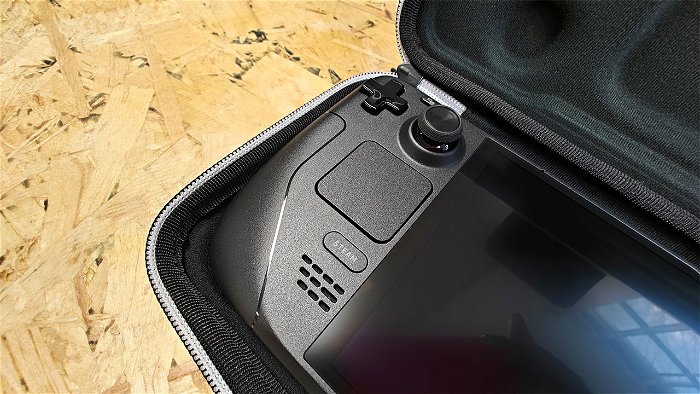
This is not to say that the first iteration was bad; it is just that Valve took notes and found a way to improve on an already fantastic system. Honestly, with so many under-the-hood improvements, it is hard to touch on them all, but we will try and dive into the changes that impact the system, along with what the average gamer should consider before purchasing.
“The Steam Deck OLED represents a significant step forward for Valve’s foray into handheld gaming, with its stunning OLED display, improved design, and thoughtful upgrades.”
Starting with the most notable new feature, the Steam Deck’s OLED display is a game changer, both literally and figuratively. The original Steam Deck’s LCD screen was good but never brought games to life as well as some of its competitors, and ultimately detracted from an otherwise impressive portable PC gaming experience. The OLED model, however, rectifies this shortcoming and offers a brilliant screen that finally puts the device on par with its competitors.
The new 7.4-inch HDR OLED display is designed from the ground up for gaming, providing striking contrast, brilliant clarity, and a larger picture. The benefits of OLED technology are well-documented, and they’re all present here: deeper blacks, better contrast, brighter colours, and less blurring. These improvements are particularly noticeable given the quality of the original Steam Deck’s screen.
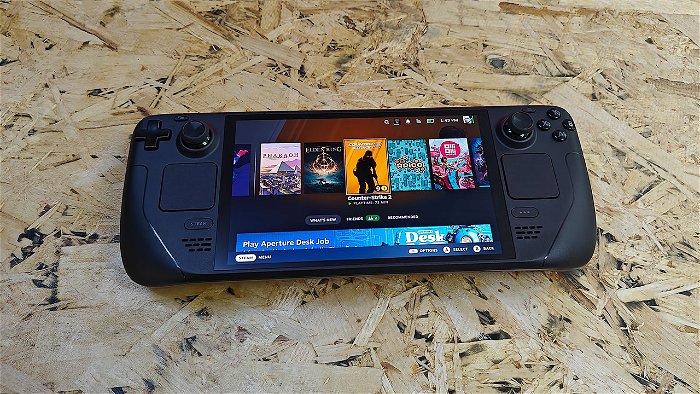
The OLED display lets the vast, perpetually expanding Steam library truly shine, making the gaming experience more immersive and visually stunning and making games where visuals and colour are important, come alive. The screen size has also seen an increase, going from a 7.0” screen to a slightly larger 7.4” screen on the OLED model, and while not a massive change, it is nice to see more space to experience all your games. There is no upgrade in resolution, and you will still only find a 1200 x 800 screen on the system, but in terms of brightness and visual quality, there is no contest.
The brightness is staggering compared to the original model. Where the first Steam Deck was limited to 400 nits of brightness, the new OLED model offers a more impressive between 1,000 nits in HDR and 600 nits in SDR. As mentioned above, the system now also offers up to 90Hz compared to the 60Hz rate of the original. These changes lead to games looking better, making it easier to see small details, and running smoother, offering an experience that feels much more akin to other handhelds on the market, like the Nintendo Switch OLED.
Since the Steam Deck OLED is a portable system, offering the best Wi-Fi possible is important, and this is why the improvements with the latest Wi-Fi 6E antenna are a noticeable improvement and offer much better speeds on networks that support the standard. Offering the ability to run on the 2.4GHz, 5GHz, and 6GHz bandwidth spectrums means you will have fewer problems with crowded networks, and while out, you have more options to connect, more stable connections, and faster overall download speeds.
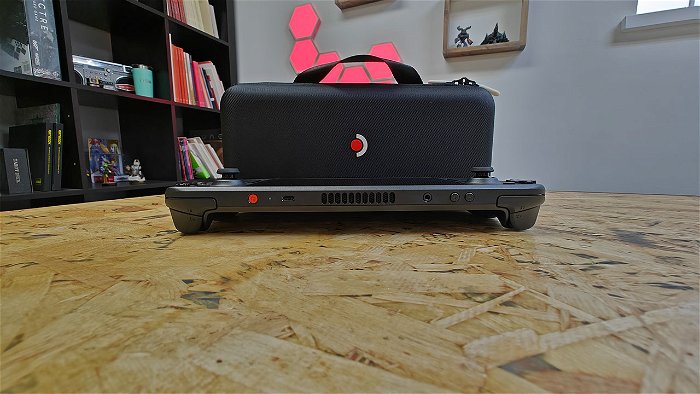
With all of these improvements, you would think that the Steam Deck OLED would suffer when it comes to battery life, but Valve has managed to avoid letting the improvements hold it back and improves on what you can expect in terms of battery thanks to the upgrades in the size of the battery, the new system sees a 30-50% increase in longevity, something people who use the system on the go will be happy to hear.
In our testing, we saw the Steam Deck OLED offers about 2-7 hours of battery life on a single charge. This will vary depending on how demanding the games you play are, along with how bright the screen is, etc. I am honestly surprised at how well it holds up, with even graphically intensive games seeing a noticeable improvement over the previous iteration of the console. With the efficiency of the OLED screen and the improvements to the battery, this all makes sense. For a portable system, this is something that feels vital, and I am glad Valve took the time to improve it.
Even though I have been incredibly positive about the Steam Deck OLED up to this point, it’s important to manage expectations when it comes to gaming performance. While the device can handle a wide range of games, it’s not going to deliver a top-end PC gaming experience. You can run a vast range of older titles, emulators, and even mid-range modern games with everything turned on without much issue, but when you try to push into AAA gaming, things can be inconsistent.
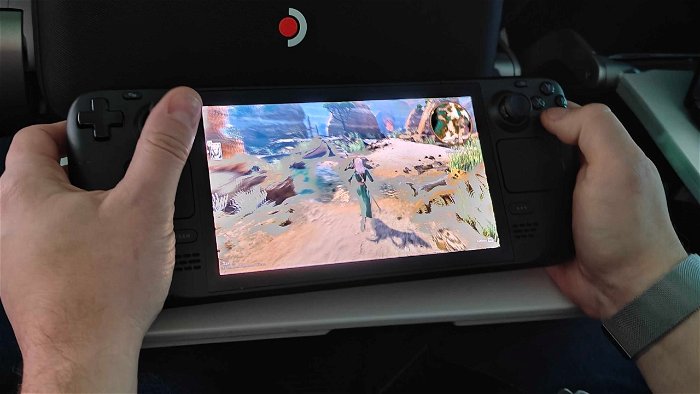
For instance, demanding games like Elden Ring and Baldur’s Gate 3 won’t run at high settings with buttery smooth 60 fps without some form of frame generation active. The processor at the console’s core is powerful, but the technology has limitations. These games are still very playable with settings adjustments, looking fantastic and running very well, but you won’t see the visuals or framerate that an NVIDIA RX 4080 paired with a top-end Intel or AMD CPU could deliver.
Because SteamOS (the system the Steam Deck OLED runs on) is based on a Linux operating system, the device also has some limitations in terms of game compatibility. Not every Steam game can be played on the device, which may be disappointing for some users. This will become less of an issue over time as new games are added. Even games that are not certified for the Steam Deck can sometimes work; it just depends on what the game requires and how much effort has been put into making it compatible.
Also, if games need a special launcher to run or rely on more advanced DRM, chances are they will have a hard time working on the Steam Deck, even with improvements to the core OS and compatibility. Fortunately, the list of compatible games is constantly growing, and there are honestly a large number of modern games that work, so most people will not feel so limited by the system.
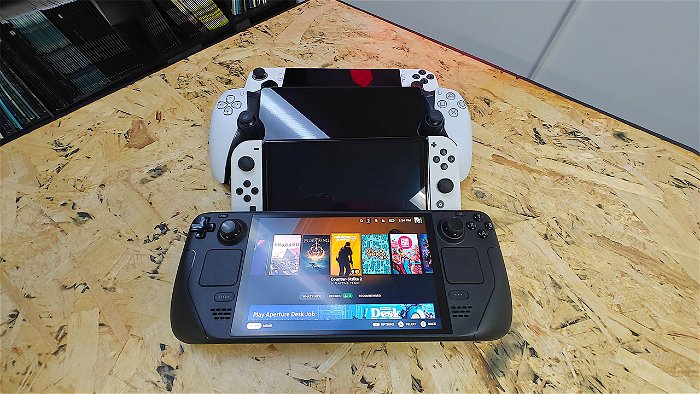
Despite these limitations, the Steam Deck OLED offers a compelling gaming experience. It’s a device that feels tailor-made for gamers, offering a chance to reconnect with a platform that can often feel daunting. While PC gaming can be tedious to get up and running, Valve has taken the hard part out of the equation and built a system that feels as much like a pick-up-and-play system as the Nintendo Switch or even the PlayStation 5 or Xbox Series X. It’s a testament to Valve’s commitment to improving the experience that the Steam Deck is as good as it is, with the company constantly improving in the areas that need it most.
The combination of decent battery life and flexible storage solutions make the Steam Deck OLED a strong contender in the handheld gaming market. It strikes a balance between performance and practicality, ensuring that gamers can enjoy their favourite titles without being tethered to a power outlet or worrying about storage constraints. It has opened up a new way for me to game, one that lets me experience the games I love without being tethered to a massive desktop, and that is amazing to experience.
The Steam Deck OLED represents a significant step forward for Valve’s foray into handheld gaming. With its stunning OLED display, improved design, and thoughtful upgrades, it offers a more immersive and enjoyable gaming experience. While it may not match a high-end PC’s performance, it strikes a fine balance between portability and power. The flexible storage options and decent battery life further enhance its appeal. For those considering an upgrade from the original or entering the world of handheld PC gaming, the Steam Deck OLED is a compelling choice that stands out in a competitive market.
